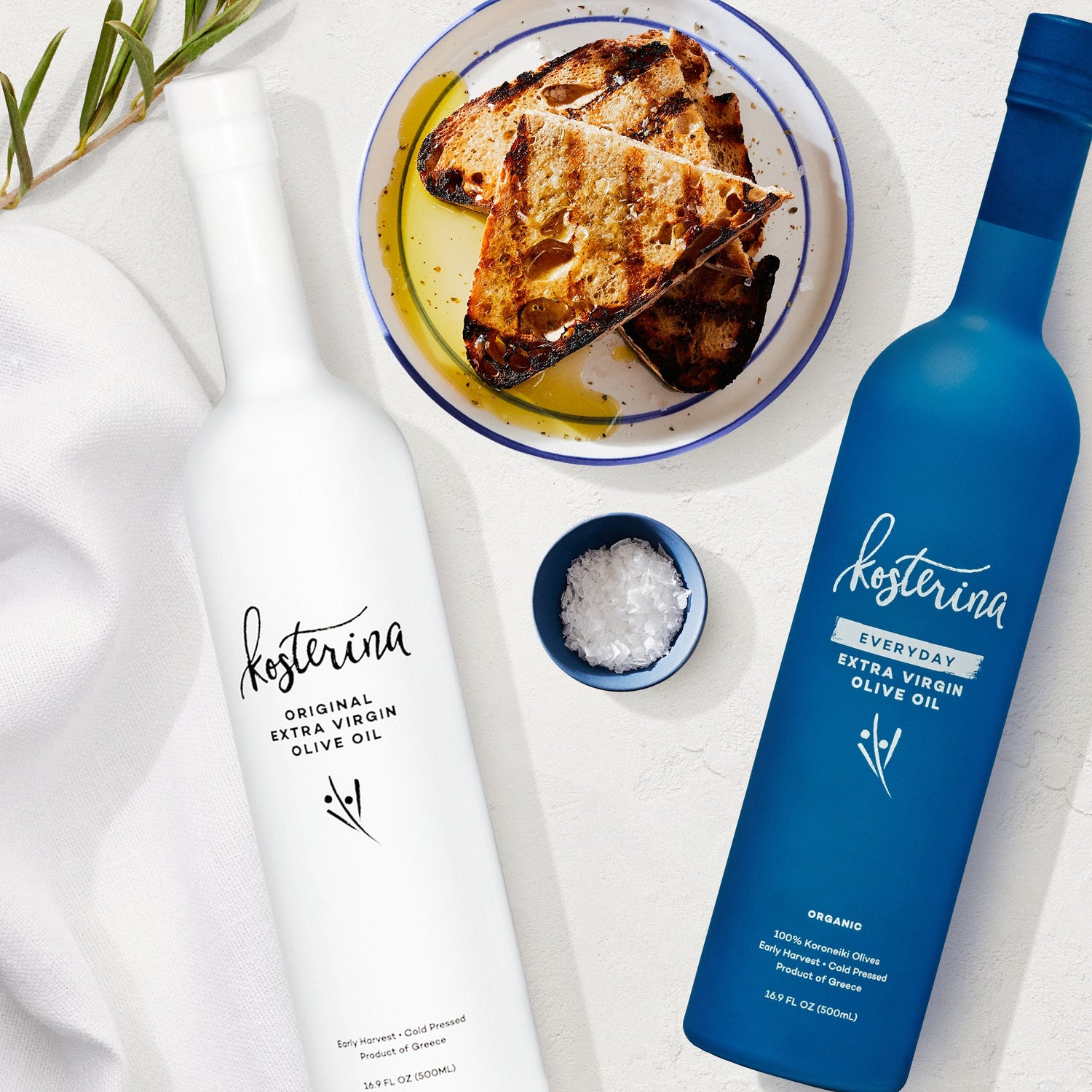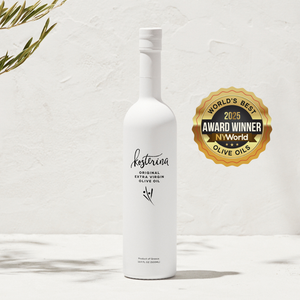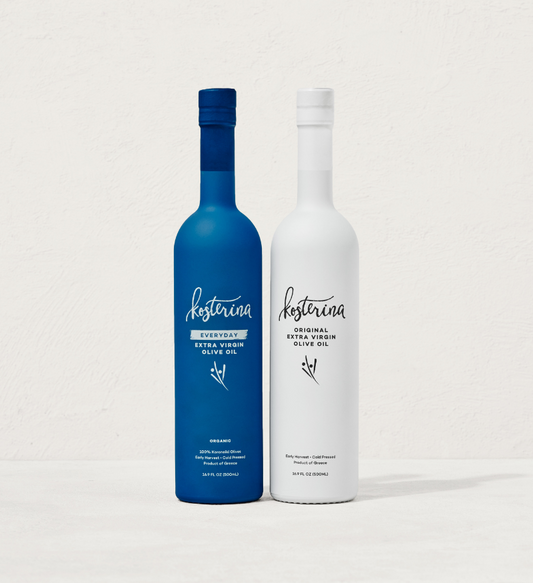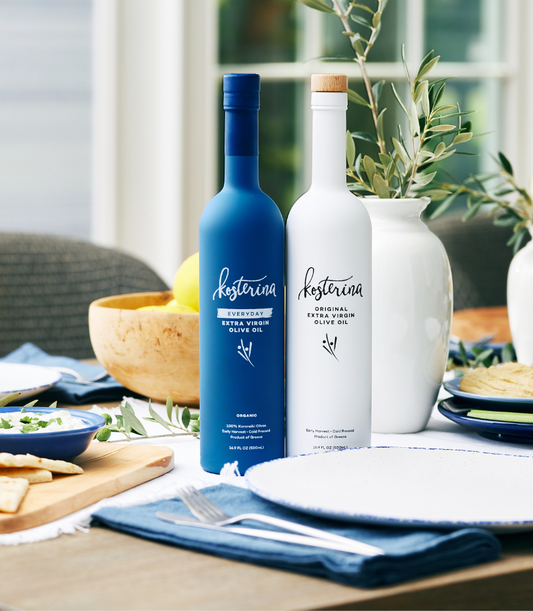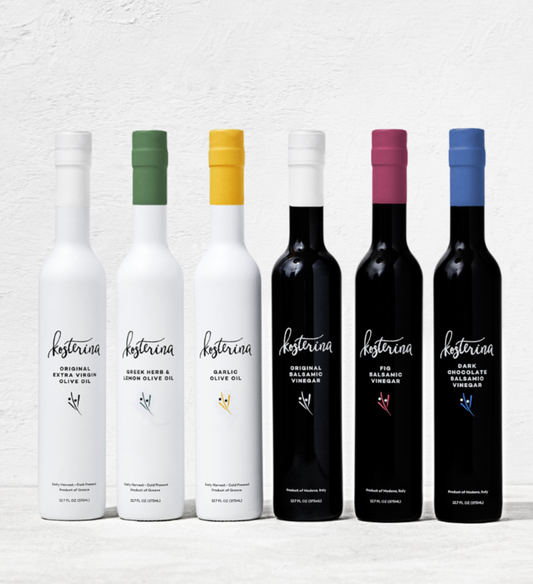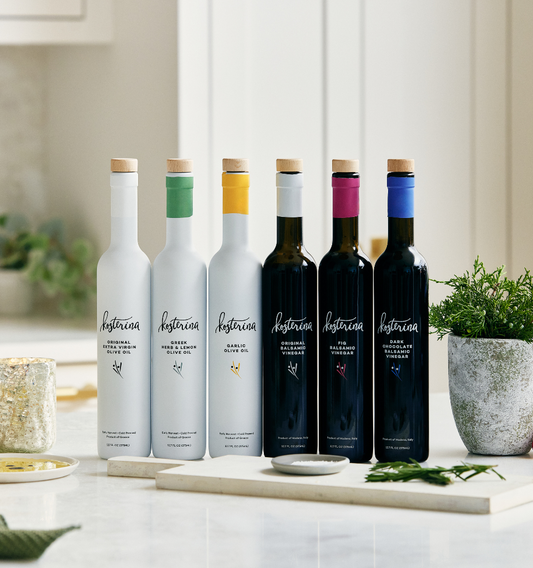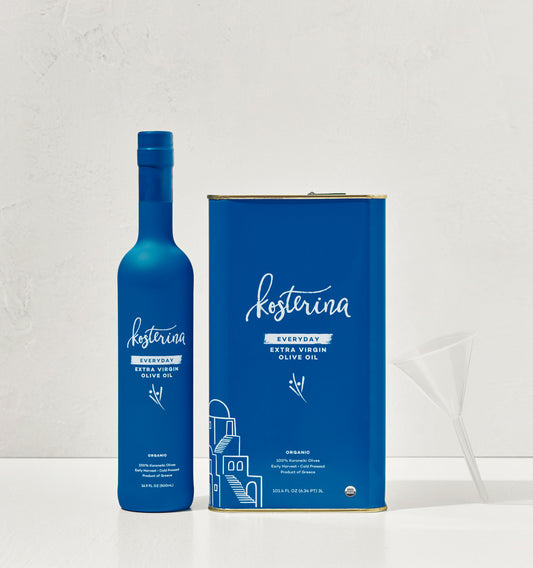If you haven’t given any thought to the olive oil you’re using, you are likely missing out on some truly major health benefits. Not all oils are created equal!
Unfortunately, there is a lot of fraudulent olive oil out there that is mislabeled as extra virgin, even when it’s not. A 2010 study conducted by the University of California–Davis Olive Center, tested supermarket samples of Extra Virgin Olive Oil and concluded that more than 69% of olive oil labeled “extra virgin” did not meet the legal standard under law.
Why does it matter if your olive oil is “extra virgin”?
Premium extra virgin olive oil is the juice that comes from the first press of green olives, which means that they are not yet ripe. This first press is important because it contains tons of polyphenols – the naturally occurring antioxidants that have been proven over and over again to improve health, reduce risk of disease and increase longevity. You can read the most recent research on the subject here.
When I started Kosterina, I learned that it takes 12 pounds of unripe, green olives to produce each 500ml bottle of a premium extra virgin olive oil. I’ll say that again -- 12 pounds of olives to produce one bottle! In order to be deemed extra virgin, an oil must have 55 mg/kg of polyphenol content. Ultra premium oils can have much higher polyphenol content (Kosterina has over 500 mg/kg!) so that just 2-3 tablespoons per day can truly improve your health and longevity. Greeks consume 20 times more olive oil than Americans and I now feel obligated to teach the American consumer about the incredible health benefits of true extra virgin olive oil and how to identify the good stuff!
Taste your olive oil like an expert
So how is the average health enthusiast to know what’s real and what’s fake?
The only way you’ll find out is if you smell and taste your olive oil--similar to how you would taste a fine wine. Here’s how to taste olive oil like an expert and what to look for:
- Pour a shot of your olive oil into a small, preferably round glass. (A wine tumbler or short cocktail glass work best).
- Cup the glass with one hand and cover the top with the other. We cover the top to trap the scent inside.
- Twist the glass in your hand to attempt to warm the oil with your body heat and move it around in a circular motion.
- Now uncover the glass and bring to your nose for a deep whiff of the olive oil. If it smells fresh like grass, fruit or vegetables, it’s more likely that your oil is truly extra virgin. Common identifiable scents from truly premium olive oil are grass, green or red tomato, banana, arugula, spinach, apple, citrus or almond. If you’re not getting much of a fresh scent, it’s likely not extra virgin. Anything that smells musty, rancid or is odorless is not extra virgin oil.
- The next step is to actually taste it. Give the glass a swirl and take a sip of the oil in your mouth but don’t swallow just yet. With clenched teeth and open lips, inhale to bring some air into your mouth and swirl the oil around your mouth. Then drink it. A true extra virgin will reveal lots of fruit and vegetable flavors as you swirl it around your mouth and will have a peppery or bitter taste at the back of your throat when you swallow it. It’s normal to cough and in fact, premium olive oils are often characterized as one-cough, two-cough or three-cough oil. The more coughing, the more the polyphenols and the better the oil!
No fresh scent, no bitter or peppery taste and no cough? Toss it and upgrade! Don’t waste your time with lesser oils!
#EVOOforlife
